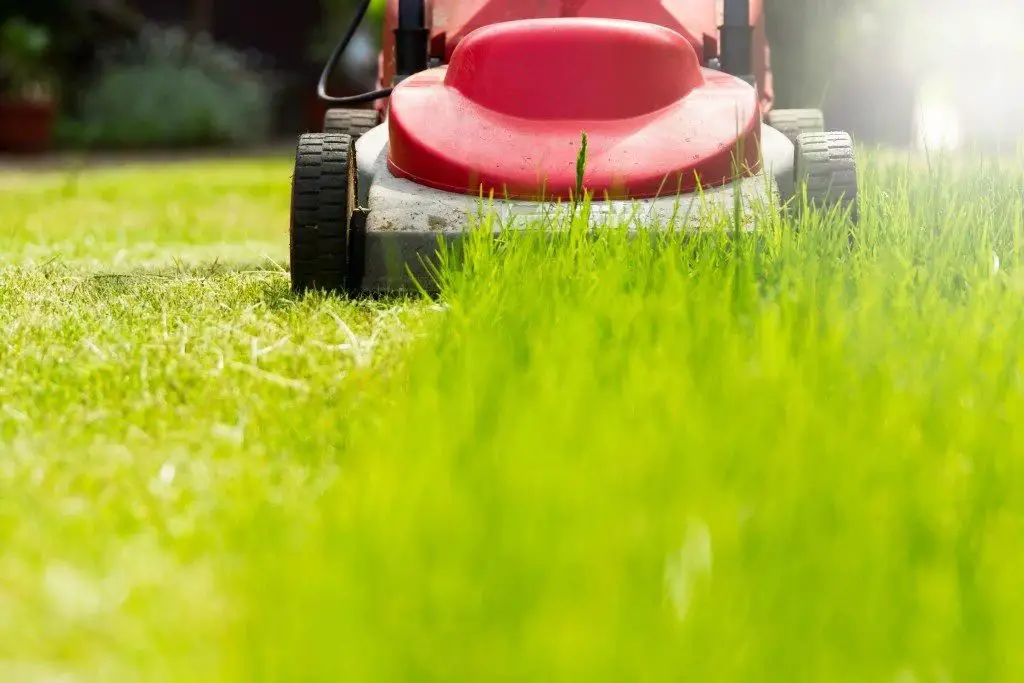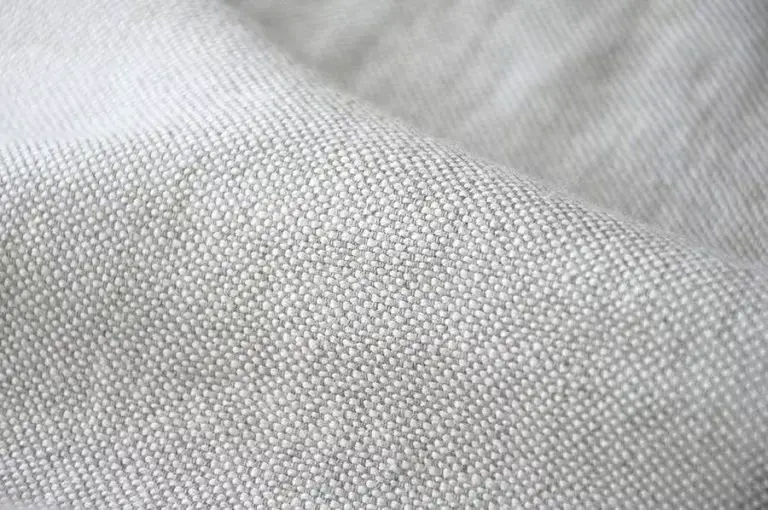What Is The Smell Of Freshly Cut Grass Called?
The smell of freshly cut grass is instantly recognizable and familiar to most people. That fresh, green aroma is distinctive, although some find it pleasant while others don’t care for it. Whatever one’s reaction, the scent is unmistakable after mowing a lawn or field. The compounds responsible for that smell are called green leaf volatiles (GLVs).
The Scent’s Name
The pleasant aroma that occurs when grass is cut is formally known as green leaf volatiles (GLVs). This term refers to a group of chemicals with a distinctive “green” smell that are emitted by plants, especially when their leaves and stems are damaged or cut.
According to sources including Wikipedia [1] and LawnStarter [2], the characteristic fresh cut grass scent arises specifically from these GLV compounds. They are produced naturally by all types of grass and other green plants.
Where GLVs Come From
GLVs are released when grass is cut or damaged. They are produced within the grass leaves through a process called the lipoxygenase (LOX) pathway (Wikipedia, 2023). When a leaf is cut or injured, enzymes called lipoxygenases act on fatty acids to produce hydroperoxide. This hydroperoxide is then converted into various compounds known collectively as green leaf volatiles.
These volatile chemicals are stored within the chloroplasts of grass leaves while they are intact. But when damage occurs to the leaf, the chemicals are released into the air, creating the characteristic fresh green smell (ScienceDirect, 2023). This often happens during lawn mowing or other activities where grass blades are cut, allowing the GLVs to rapidly vaporize.
Therefore, the smell itself is produced within grass leaves as a defense mechanism anytime they experience physical damage. The cutting action causes a burst of GLV release, creating the refreshing scent that people notice and associate with freshly mowed grass.
Chemical Composition
The smell of freshly cut grass is primarily caused by a group of chemical compounds called green leaf volatiles (GLVs). The most significant of these compounds are:
- cis-3-hexenal – This chemical makes up about 30-50% of the total GLV mixture and has an extremely low odor detection threshold, allowing humans to smell it at very low concentrations. It gives freshly cut grass its sweet, fruity scent.
- cis-3-hexenol – This alcohol makes up around 20-30% of the GLV mix and has a grassy, leafy aroma.
- cis-3-hexenyl acetate – Comprising around 10-20% of the GLVs, this compound smells like a blend of banana and apple.
These three chemicals, along with several other hexenals, hexenols, and hexenyl esters, interact to produce the characteristic green, bright fragrance people associate with freshly mowed lawns (Wikipedia). Their proportions and concentrations vary depending on the species of grass, but cis-3-hexenal is consistently the most abundant and impactful component.
Evolutionary Purpose
The fresh, green scent of cut grass stems from the plant’s evolutionary defense mechanisms. When a lawn is mowed or physically damaged, the injured plant tissues release chemical compounds called green leaf volatiles (GLVs). These serve multiple purposes for the grass.

First, GLVs function as alarm signals. Their sharp, pungent odor essentially activates a distress call, warning nearby plants of potential danger like grazing animals or lawn mowers. Other plants detect the GLVs and prepare chemical defenses in case they are next. Some plants even release extra GLVs proactively to amplify the alarm signal.
Second, GLVs may deter further attack. The strong smell overwhelms herbivore predators with an unpleasant odor, causing grazing animals to move away. Additionally, some studies suggest GLVs attract predators to prey on grass-eating insects.
So in essence, the signature scent of fresh cut grass allows plants to communicate, defend themselves, and take collective action against threats. It is an evolutionary adaptation that has persisted for the survival of many grass species.
Human Perception
Humans find the smell of freshly cut grass pleasant due to the grass’s chemical composition. When cut, grass releases green leaf volatiles (GLVs) which have a sweet, floral scent [1]. GLVs contain six carbon atoms structured in a way that is non-threatening and attractive to the human nose. Research suggests that humans may find the smell pleasant because it reminds us of flowers and fruits [2]. The chemical makeup triggers a positive response in our brains.
Regional Differences
The smell of freshly cut grass can vary in different regions due to the presence of different grass species. Each grass species releases its own unique blend of GLVs, influencing the overall scent profile. For example, Bermuda grass is common in hot southern regions of the United States and emits high levels of trans-2-hexenal, lending a pungent green aroma.[1] In northern cooler regions, ryegrass and fescue grasses predominate, producing more subtle grassy fragrances from compounds like cis-3-hexenol.[2] Even within a region, the specific grass blend used in lawns and parks can create distinctive smells.
Additionally, environmental factors like moisture, soil conditions, and time of day can influence GLV production and release. The overall scent profile emerges from complex interactions between grass species, growing conditions, and cutting time.
Health Effects
The smell of freshly cut grass has been shown to have positive effects on human health and well-being. According to a 2020 study, green leaf volatiles (GLVs) emitted after mowing may actually help relieve stress and improve mood in humans. Researchers found that smelling GLVs led to decreased levels of the stress hormone cortisol. This aligns with past research finding the scent of cut grass creates feelings of relaxation and contentment.
Additional studies have demonstrated exposure to the smell of freshly mowed grass may also lower blood pressure, heart rate, and anxiety. Scientists believe these effects are likely due to evolutionary factors – since grasses release GLVs when under attack, humans evolved to associate the smell with safety and abundance. Essentially, fresh cut grass may signal to our brains that an area has ample resources and lacks immediate threats.
More research is still needed, but the available evidence suggests regularly smelling freshly cut grass could potentially offer some benefits to mental and physical health. However, extremely frequent exposure may cause odor fatigue and negate any positive impacts.
Recreating the Smell
Perfumes and candles try to mimic the scent of grass by using synthetic GLV compounds. Brands like Demeter and Urban Outfitters have fragrances that attempt to capture the fresh, green smell of a mowed lawn (Demeter). These scents usually contain ingredients like cis-3-hexenol, cis-3-hexenyl acetate, and limonene to recreate that freshly cut grass aroma (Reddit). While synthetic GLVs don’t perfectly replicate the complex smell, many find these fragrances evoke nostalgic memories of summer days spent outdoors.
Some of the most popular “cut grass” scents are Demeter Grass, Marc Jacobs Daisy, and Fireplace Candle’s Fresh Cut Grass. Reviews indicate the realism varies, but these fragrances capture at least the essence of that crisp, green scent (Fragrantica). With continued innovation in aroma chemistry, scientists are getting closer to identifying and reproducing the full range of volatile compounds released when grass is cut.
Conclusion
The smell of freshly cut grass – technically known as green leaf volatiles or GLVs – is a familiar summertime scent with a complex scientific background. We explored where GLVs come from, their chemical makeup, evolutionary purpose, and differences based on grass species and geography. While primarily serving ecological functions, the smell of cut grass also triggers pleasant nostalgic memories in humans. The distinct scent is created when plant cell membranes are damaged, releasing GLVs into the air. Though synthetic GLV fragrance products exist, there’s nothing quite like the authentic smell of grass right after it’s been mowed. Its associations with warmth, nature, and summertime make the scent universally appealing. Understanding the science behind this common smell gives us new appreciation for the little pleasures in life.



